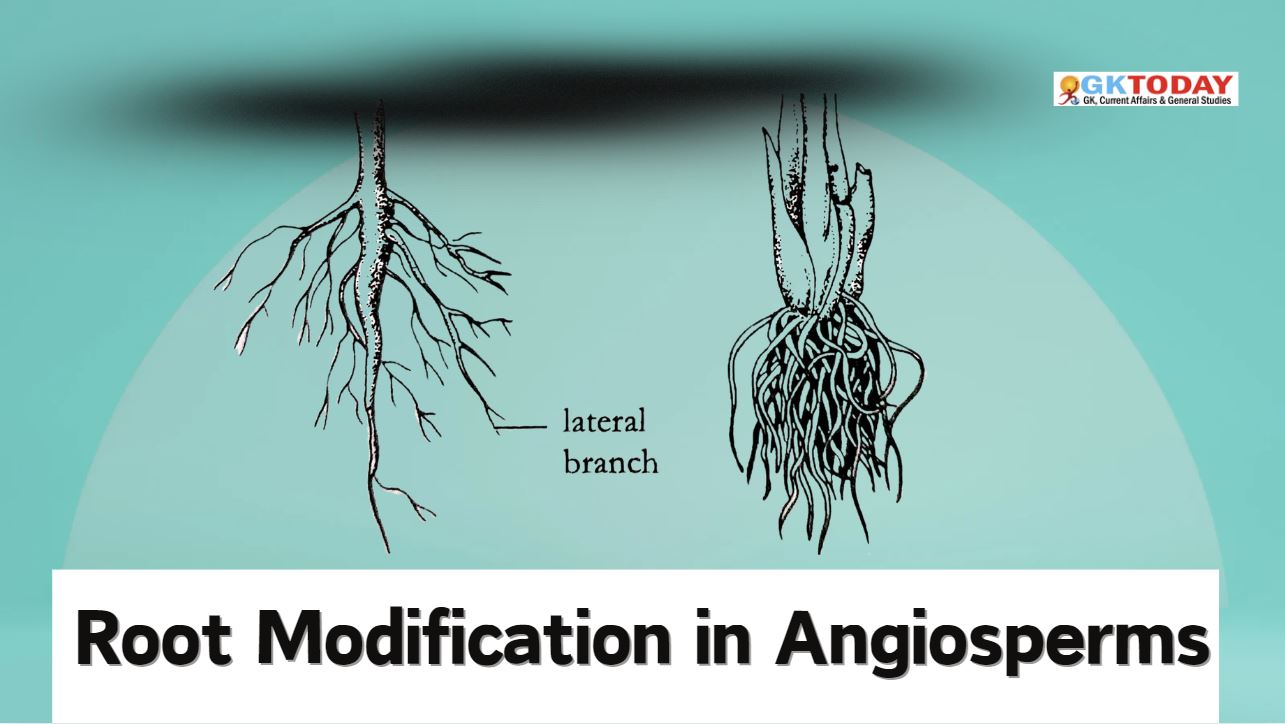Root Modification in Angiosperms
Roots of Angiosperms always move opposite to the sunlight. The soft parts of roots and root hairs absorb water and mineral salts from the soil. The root transports water and mineral salts to the stem and ultimately to the leaves. Some roots like of carrot, radish etc. store foods and in contingency plants use these foods. The roots are of following types:
- Tap root: The radical of such root develops itself and forms a main root and such roots exist in dicotyledonous plants.
- Conical shape: This type of root is thickened towards base but thin near the side of the plant. Example-carrot.
- Napiform: This type of root is extremely thickened and becomes inflated spherical at the base (bottom) but it becomes extremely thin at the top of the plant. Examples-turnip, beet root etc.
- Fusiform : This type of root is inflated in the middle portion, while towards bottom and top it becomes thinned. Example is Radish.
- Pneumatophores : This type of root is found in salty soil of the sea and for the respiratory activities it undergoes towards negative geotropic. Examples are Rhizophora, etc.
Adventitious Roots
Adventitious roots originate from the stem, branches, leaves, or old woody roots, rather than the normal root system. For example in Strawberry and Willow. These roots develop to avoid stress or fight with the problem of nutrition deficiency or to get sufficient oxygen, or avoid too much oxygen. One more important work of these roots is to help in vegetative propagation in many plants. This ability of plant stems to form adventitious roots is utilized in commercial propagation by cuttings. Understanding of the physiological mechanisms behind adventitious rooting has allowed some progress to be made in improving the rooting of cuttings by the application of synthetic auxins as rooting powders and by the use of selective basal wounding.
Adventitious roots develop near the existing vascular tissue, so that they can connect to the xylem and phloem. There are several kinds of modifications such as:
- Tuberous roots are without any definite shape; example: Sweet Potato.
- Fasciculated root (tuberous root) occur in clusters at the base of the stem; example: asparagus, dahlia.
- Nodulose roots become swollen near the tips; example: turmeric.
- Stilt roots arise from the first few nodes of the stem. These penetrate obliquely down in to the soil and give support to the plant; example: maize, sugarcane.
- Prop roots give mechanical support to the aerial branches. The lateral branches grow vertically downward into the soil and acts as pillars; example: banyan.
- Climbing roots these roots arising from nodes attach themselves to some support and climb over it; example: money plant.
Modifications of adventitious roots
| Roots | Examples |
|---|---|
| Fibrous root | Onion |
| Leafy root | Briophylem |
| Climbing root | Betel leaf, pothos |
| Buttress root | Terminolia |
| Sucking root | Cuscuta |
| Respiratory root | Juicia |
| Epiphytic root | Orcede |
| Aerial root | Orcede |
| Assimilatory root | Tinspora |
| Parasitic root | Kascutta |
| Moniliform root | Grapes, bitter guard |
| Nodulose root | Mango turmeric |
| Prop root | Banyan tree |
| Stilt root | Maize, sugarcane |
| Fasciculated root | Dahlia |


